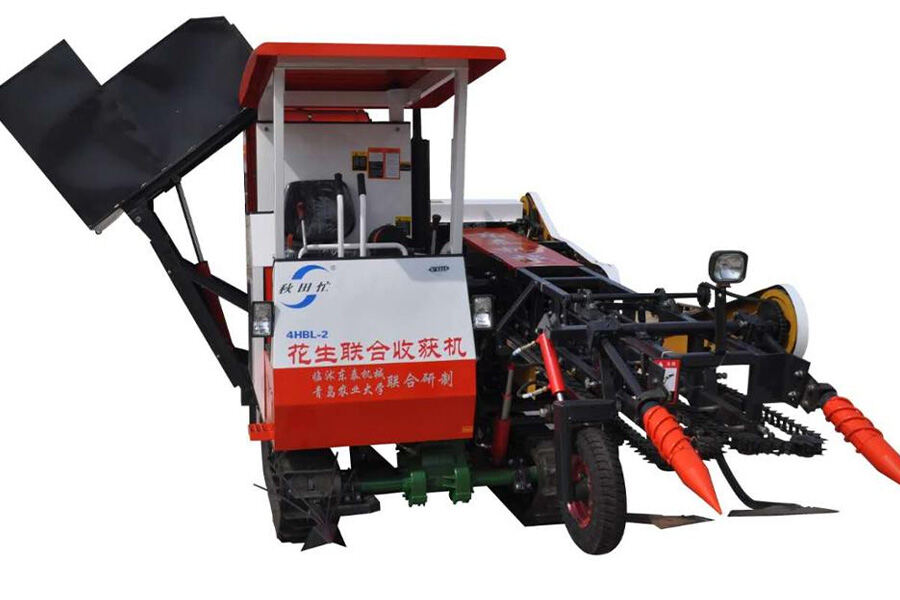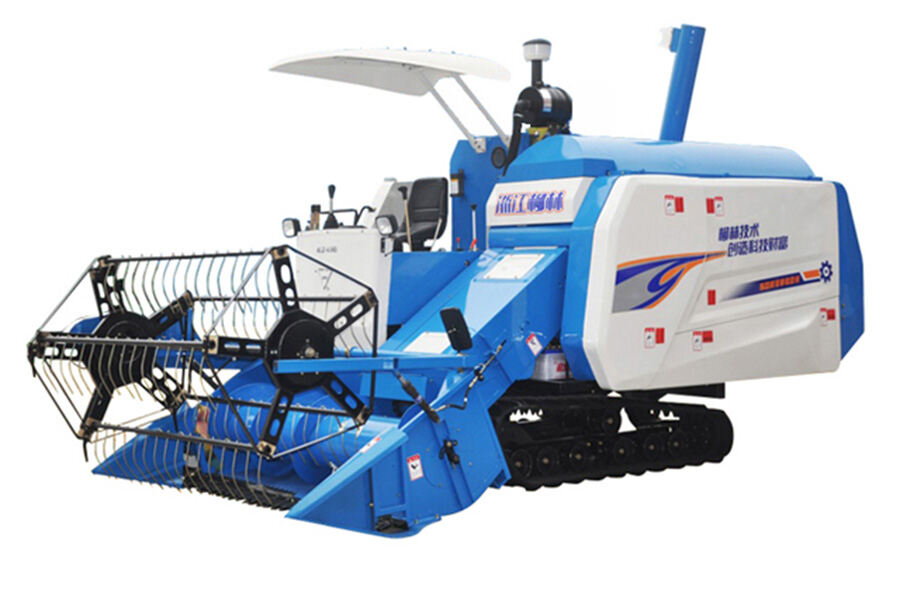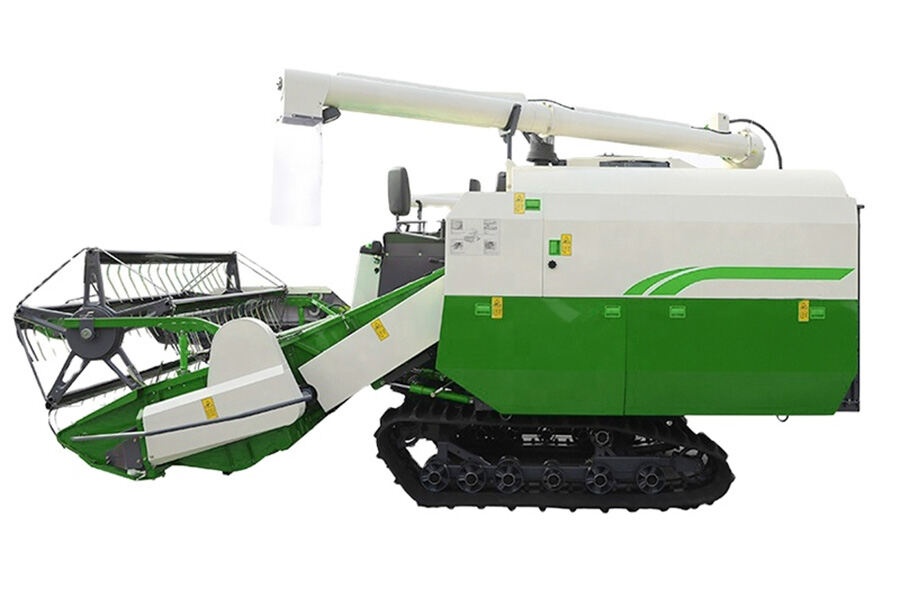Technological advancements and innovation in the agricultural industry have encouraged the development of modern equipment, thus making tiring and time-consuming tasks easier and quicker. The invention of the combine harvester made tedious farming work like harvesting, separating, threshing, collecting, and cleaning grain simpler. The modern combine harvester is fuel-efficient agricultural machinery that enables farmers to reduce costs, harvest faster, and improve profits.
Since the market is flooded with many combine harvesters with varied features, harvesting companies may find it challenging to know what type suits them best. This article intends to shed light on factors to consider when choosing combine harvesters, but before that, let us look at their market projection.
Table of Contents
Combine harvester market forecast
Benefits of combine harvester
Factors to consider when choosing a combine harvester
Types of combine harvester
Combine harvester market forecast
The combine harvesters’ market is expected to grow at a CAGR of 3.7%, with the forecast covering the period from 2022 to 2027. Several factors in the agricultural industry facilitate this projected growth, including:
- Increased farm mechanization, labor shortage, and farm mechanization.
- Favorable credit policies from most government and financial institutions on modern agricultural machinery.
- Farmers desire to reduce harvest losses and save time and energy.
- Farm expansion in Europe and America propels the demand for large combine harvesters, while Asia continues to highly demand small combine harvesters.
Benefits of combine harvester
Combine harvesters have significantly improved agricultural practices with several notable benefits such as:
- Cleaner grains: Combine harvesters produce cleaner grains than the manual process, which attracts premium market prices.
- Reduced crop loss: Combine harvesters improve crops collected by a large margin compared to manual harvesting.
- Saved time: Manual harvesting, threshing, and cleaning crops could take days depending on the size of the farm; however, with combine harvesters, the whole process takes one day.
- Reduced cost: The company needs to hire only one or two operators to manage the harvesting, unlike the manual process, which requires several workers.
Factors to consider when choosing a combine harvester
Several factors go into determining the right combine harvester, depending on the tasks the harvesting company or farmer wants to accomplish. Here are some factors to keep in mind:
Brand
The time of harvest is marred by pressure on the machine, hence the need to ensure the combine harvester’s reliability. Reputable brands promise better performance because their products have been successfully tested and the spare parts are easy to find if a replacement is needed.
It is disadvantageous to choose nearby dealers to assist in case of any problems. Interestingly, some brands offer mobile service trucks in some regions during harvesting time to assist should problems arise.
Size and capacity
The buyer should ensure that the harvester’s capacity perfectly fits the grain header. The gathering system located at the head of the machine forms part of the combine harvester’s capacity used for collecting crops.
The correct size of a grain header improves the combine harvester’s efficiency. Different combine harvesters can accommodate other grain headers for unique uses, such as draper, auger, stripper heads, windrow, and crop-specific heads. When selecting a combine harvester, go for one whose head minimizes crop loss.
Processor
The combine harvester’s processor is another factor worth considering when investing in this agricultural machine. The kind of crops the farmer intends to grow determines the type of processor they will choose. Fortunately, several new harvester models are manufactured with adjustments that allow settings to suit various crop harvesters.
Before deploying the combine harvester in the field, ensure it has the suitable processor settings that suit the crop. It is essential to check the processor’s setting because aggressive settings could damage certain grains. For instance, faster speed and small concave clearance settings increase the chances of crop damage. If the processor damages lots of grain, the combine harvester’s cleaning shoe will bear a heavier load, leading to shoe losses.
Design
Combine harvesters have three main operation designs: semi-automatic, fully automatic, and manual. An automatic combine harvester is more efficient and saves time and money. Beginners learning to use a combine harvester will fare better with a fully automized design than a manual one.
Waste management
Crop residue management is vital for the combine harvester, and many manufacturers have designed better systems for their machines. When purchasing a combine harvester, the company should look for a machine with finer chopping, more soil contact, and wider spreading for improved harvesting.
The latest models allow operators to switch to different modes, from safety and comfort to spread and windrow modes for better results. Additionally, the purchasing company can choose harvesters that can switch rowing and switching abilities without changing components for easier operations.
Comfort and control
Combine harvesters can work for hours throughout the day, which means the operator will be seated for an extended period. Therefore, comfort and control are essential factors to consider when buying this machine. Fortunately, most reputable brands prioritize comfort in the harvester’s cab, emphasizing ergonomics.
Modern cab areas often come with heating or cooling apparatus, storage space, connectivity systems, and safety features for better operations. Moreover, some models come with entertainment systems to ensure the operator works in an upbeat mood!
Engine power
It is essential to select a machine with enough engine power to handle the harvesting task. The machine’s class tells its engine power, with those of the higher class considered more powerful. However, with rapid innovation changes, classifications continue to vary from one manufacturer to another. A company with a large farm to harvest could consider purchasing a combine harvester with a larger high-powered engine.
Types of combine harvester
Combine harvesters are divided into different categories depending on features and methods of operations. Here are three distinct types of combine harvesters.
Self-propelled combine harvester

The self-propelled combine harvester is probably the most popular harvesting machine in modern farming. It has its own attached engine, which performs two functions: powering the machine and other harvesting-related operations.
The self-propelled combine harvester’s engine is heavy-duty, successfully empowering the machine in the field. However, the machine’s cutting and loading capacity vary depending on the size and crop being harvested.
For instance, a self-propelled corn harvester has a cutting capacity of 20 min/acre, while the capacity of the mini self-propelled wheat combine harvester is 2.5kg/s.
It is suitable for crops growing on hard soil and is divided into two types:
- Conventional combine harvesters comprise the machine’s threshing system and the straw walkers.
- Axial-flow combine harvesters are made up of the axial flow threshing system.
Tractor pull combine harvester

Tractor-pulled combine harvesters are pulled or controlled by tracks instead of wheels. The tractor shaft powers the cutting, threshing, separating, and cleaning instead of a different engine. They are preferred by farming companies operating in areas where wheels can easily get bogged down, especially during rice harvesting.
Tractor-mounted combine harvesters are powered by diesel engines. The engine power may vary from one manufacturer to the other, but most engines have direct injection and are four-stroke water-cooled.
The tractor-pulled combine harvester’s cutting capacity also varies depending on the crops to harvest. For instance, the cutting capacity for the wheat is 2-3 acres/hour, while the capacity for paddy is 1-2 acres/hour. Other tractor-mounted combine harvesters have a cutting capacity of 2000mm/hrs.
Hybrid combine harvester

The hybrid combine harvester has unique features suitable for grain, rice, and multi-crop harvesting. It offers convenience, efficiency, and robustness, but one of its main highlights is its cabin’s comfort. This feature allows the operator to sit longer and harvest more. Its designs and harvesting equipment enable the machine to work well with different types of crops and terrain.
The hybrid combine harvester has a higher operating speed even in challenging conditions. Its sieve does not overload as the tank receives only qualified and clean yields after cleaning. Furthermore, it has minimum fuel usage and lower grain loss, contributing to increased productivity.
The hybrid combine harvester’s cutting capacity is an important factor worth considering when deciding to purchase; however, it depends on the make of the machine. For instance, the new X-series has a cutting speed of 1200 strokes per minute, filling the tank at 90 l/s.
Conclusion
Farming is an ancient process; however, it has been transformed by recent technological advancements in the agricultural industry. Modern equipment like combine harvesters has made strenuous, labor-intensive farming activities easier. Investing in a combine harvester can reduce labor costs and improve profitability.



